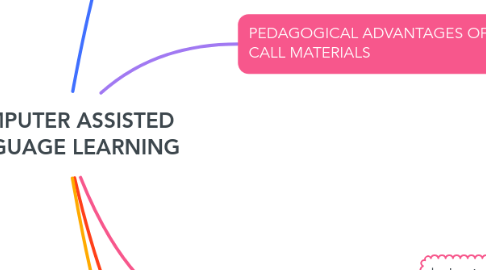COMPUTER ASSISTED LANGUAGE LEARNING
da vicky calzada


1. History
1.1. call in the 1950s and 1960s
1.2. call in the 1970s and 1980s
1.2.1. Aplications of call
1.3. call in the 1990s
2. PEDAGOGICAL ADVANTAGES OF CALL MATERIALS
2.1. authenticity
2.2. the importance of interaction
2.2.1. THE CHARACTERISTIC FEATUREOF CALL
2.2.1.1. SOFWARE TOOLS TO SUPPORT LANGUAGE LEARNING
2.2.1.1.1. hiper card
2.2.1.1.2. daedalus
2.2.1.1.3. work processing
2.2.1.1.4. corpus
2.2.1.1.5. mobile learning
2.3. data access
2.4. feedback
3. REVIEW OF THE LITERATURE
3.1. behaviourist call
3.2. communicative call
3.3. integrative call
4. INTERNTE
4.1. CALL IN PRACTICE
4.1.1. CALL DRAWBACKS
